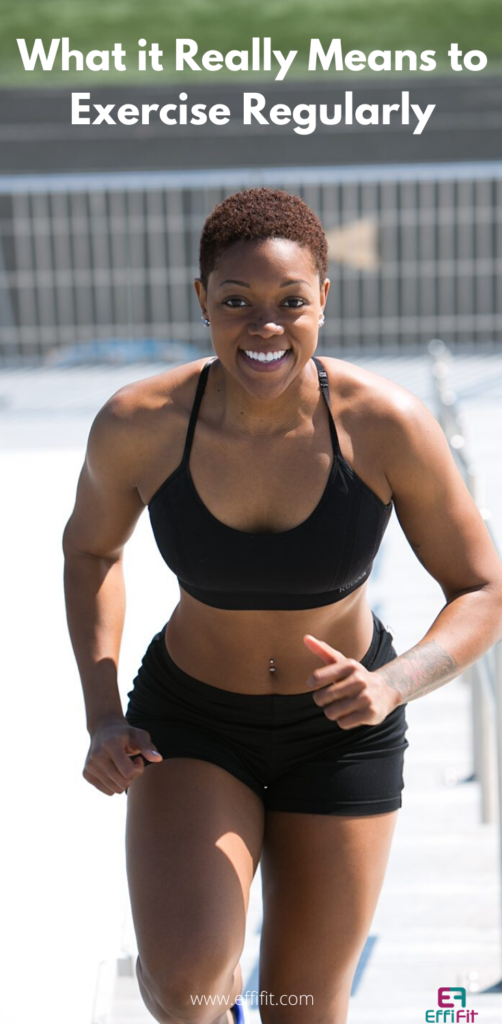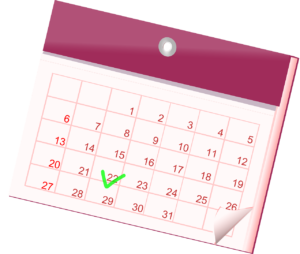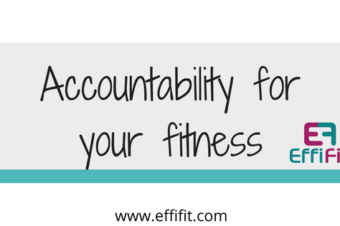We talked about breaking up exercise and weight loss and learning to exercise for health and well-being, but what does that really mean? There are a few things to consider. One being the exercise recommendations for Americans, and the second being steps to take for fitting regular exercise into your schedule. Let’s break it down further.

Exercise recommendations for Americans
The exercise recommendation for Americans is 150 minutes of moderate-intensity, aerobic-based physical activity or exercise a week. Or 75 minutes of vigorous-intensity, aerobic-based activity. There are also strength and flexibility training recommendations which we will discuss in a later post. Physical activity is general movement of the body whereas exercise is structured and planned movement of the body. Examples of structured exercise are running, walking, swimming, biking, aerobics, yoga, and strength training. Physical activity is important, but our focus is on exercise.
What is moderate-intensity exercise?
Moderate-intensity is exercise where your breathing and heart rate are increased. The best test for this is the talk test. If you can talk while doing the activity, you’re at moderate intensity. If you can sing, you need to pick it up, and if you are having difficulty talking during the exercise, then you are doing more vigorous-intensity exercise. 150 minutes a week of moderate-intensity exercise can be broken down to 30 minutes of exercise 5 days a week. That could be going on a brisk walk for 30 minutes before work, during lunch, or after work Monday through Friday.
What is vigorous-intensity exercise?
Vigorous-intensity exercise is when your breathing and heart rate are up dramatically. Talking during exercise is harder, you would need to take breaths in between words to get through a sentence. An example of this is going for a fast run or doing a high intensity aerobics class like HI fitness or kickboxing. Just thinking of those might get your heart rate going. With vigorous-intensity, the goal is 75 minutes of exercise a week. If you opt for the 75 minutes, prepare to work hard during each workout.
Now that we have a base understanding of the exercise recommendations, what does this mean to our daily lives?
At some point, we will want to work up to meeting those weekly exercise recommendations. But for now, the next step in this process is getting started with implementing this into your weekly schedule. Here are some ways to start putting a plan in place for you.
Find activity you like, including ones that support health and well-being.
Trying out different things. Maybe you heard about a class that was intriguing or your best friend loves a certain type of exercise. Give it a try. The benefit of exercising for health and well-being is that you can explore exercise options and find something that works for you and your schedule.
Some aerobic exercises to try: brisk walking, hiking, jogging, aerobics classes (HI fitness, Turbo kick, kickboxing), high intensity interval training, swimming or biking. Try some of them or try all of them. If your fitness!
Determine your health and well-being goals.
Do you want to be able to hike regularly, lift heavy stuff, improve flexibility, or all 3? Those are just some things that you can do because you are exercising regularly. You may find other health goals that are important to you too. Define what each of those are and what that might look like in an exercise program.
Set a start date – if you aren’t exercising yet.

Determining when you are going to get started is probably one of the most important steps. I know sometimes deadlines suck, but this will help you plan what you need to do to get started. You don’t have to start today, this week, or even this month. But put a date on the calendar and work toward the needed prep for you to start on that day. That can include researching exercises you want to try, determining your health goals, and maybe buying some new workout clothes!
Build a schedule – how many days a week will you exercise? Will it be mornings or evenings?
With the schedule that you have created for yourself, remember to be realistic. I think we have all been there where we have grand plans for exercise only to learn in the first week or few weeks that it’s just too much. My advise? Start with less but something you know you could do every week. You can always build up or build down as needed. Each week may vary too based on responsibilities going on in our lives. In an upcoming post, we’ll talk in more detail about frequency of exercise for cardio, weight lifting, and flexibility training.
Set a new intention for exercise.
Maybe before the goal with exercising was to lose weight or improve your appearance. But now our intention will be to improve our health and well-being. This intention can help you get started and continue long-term because we have a reason for it.
ACTION: Take the first step by finding exercise you would like to do regularly. If you already know that, then it’s time to determine your health and well-being goals. Share in the comments what exercise(s) you plan to do regularly.
Until next time! – Atim






One Response
Aerobic Exercise Recommendation for Busy Women | EffiFit
[…] talked about the aerobic exercise recommendation in a previous post, but let’s break it down further. The physical activity recommendations for Americans recommend […]